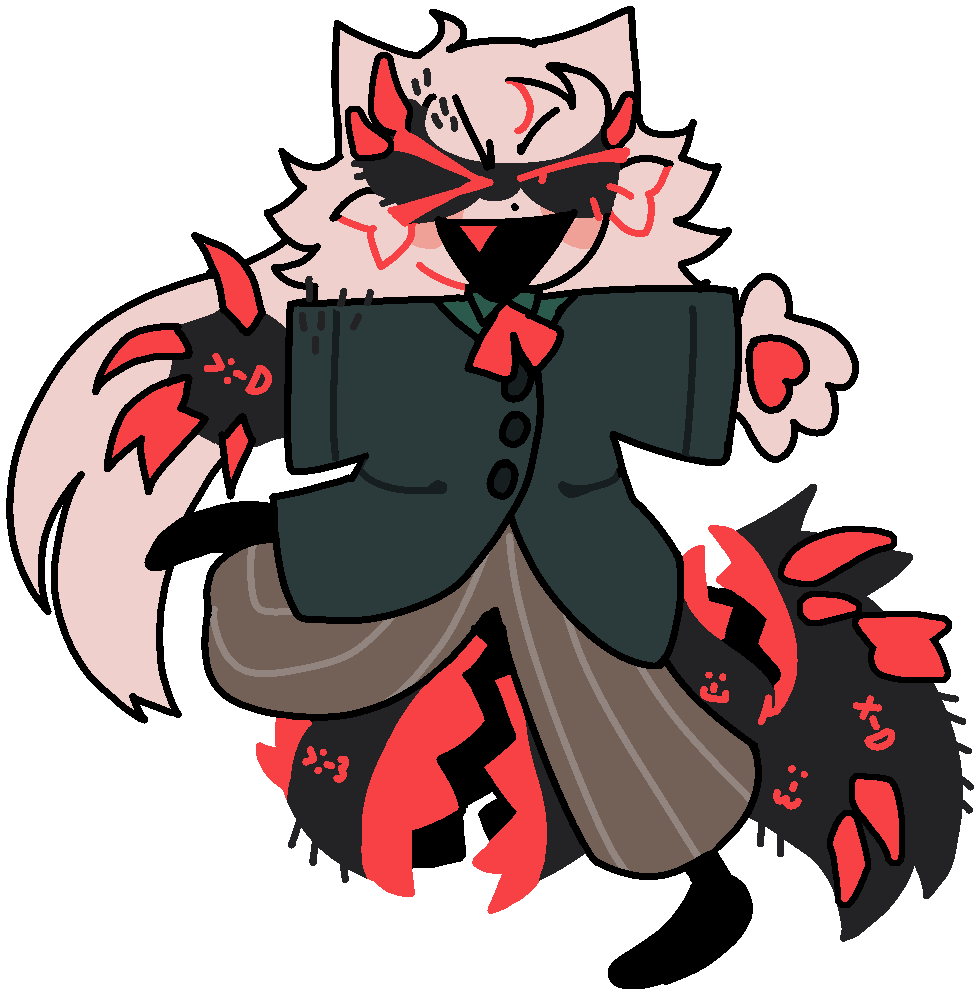*Deep in a hidden forest there was... a fungus?
It didn't appear sinister to the researchers of Pirox Laboratories, who barely gave it a second thought other then to collect it for sampling. But this was a horrible mistake. The fungus began infecting every researcher one by one, until there was only one left alive. It was up to him and him alone to keep this horrible disease from spreading anymore then it already had, and to come up with a cure. It's been a year and a half since the outbreak.
He's running out of time...
*This blurb is outdated for the time being, as it does not entirely correspond with the new species information.
Urchifics are a species identified by the parasitic infection known as Urchisis. It is primarily sourced from an alien fungus and is spread via spores as the fungus blooms. When an urchific blooms, their infection cracks, and flowers, plants and/or fungi bloom through said cracks; this is when they become infectious to others. These flowers, plants and/or fungi can be of any kind. Once the blooming period is over, the flowers/plants/fungi shed and the infection seals up again. Urchisis is incredibly infectious, as it can affect any living organic being.

*Urchific parasites are not actually all this small as demonstrated. Preferably they would be the same general size as the host by default.
**If the Urchific has a mixture of flowers, plants and/or fungi, they'd be more evenly mixed and distributed than what is demonstrated. This demonstration is just to show what each would look like individually; they may have all, one, or none.
Urchisis in and of itself is a parasite; the parasite is the Urchific and what unites them as a species. As the infection in a host grows, a unique to that host parasite begins to manifest and gain consciousness. While signs of the infection still remain beneath the skin, the parasite starts out as a little voice in their host’s mind, and as the infection breaches the surface of their skin into what identifies urchisis—the affected patches of skin with spiky protrusions—the parasite begins to manifest into sort of a “ghost” that only the host (and other affected hosts) can see and touch. The parasite’s manifestation is determined by how the host themself looks, and what traits the parasite exhibits to make themself more at home in their host’s body, thus influencing how they end up manifesting. Certain traits begin to exhibit with the infection surfacing, and they are catered to the parasite’s personal preferences and temperament. Parasites orchestrate such traits according to their preferences either to make them more comfortable with how they end up manifesting (They appear to be composed of the infection itself) or to make them more comfortable with their host’s body if they have intentions to advance the infection.
Urchisis, in order to cooperate with the host's body, severely alters the internal structure and flesh in such a way that it can continue to operate without the immune system interfering, or the body failing entirely beneath the alterations. This leads to change in properties of all affected flesh, organs and/or bones, such as color, texture, exhibition, and new additional properties not native to the body. This process is how the infection initially begins before the infection is entirely incurable; when the infection sites begin to breach the surface of the skin. It is a painful process, and tends to ache like bones do when they grow, though it is possible for the pain to be much worse. The severity of the growing pain is not predictable or specific to any one parasite. Pain tolerance and detriment to being injured varies between Urchifics after the infection has altered the body.
Manifested parasites can alter their image at will in the sense that they can contort their bodies, alter how they appear, and change sizes. This is due to their being what is considered incorporeal; they do not have a physical body to restrict them. However, they must always remain at least vaguely in the image of their host, as prior to infecting them they have no image to begin with; the host is their only point of reference. Additionally, they can float, furthering their likeness to a "ghost".
As a general rule, the urchific parasites are their own beings with their own motivations, thoughts, feelings, and desires. How the infection grows, is displayed, what traits it exhibits, and how specifically they manifest is primarily determined by them.
